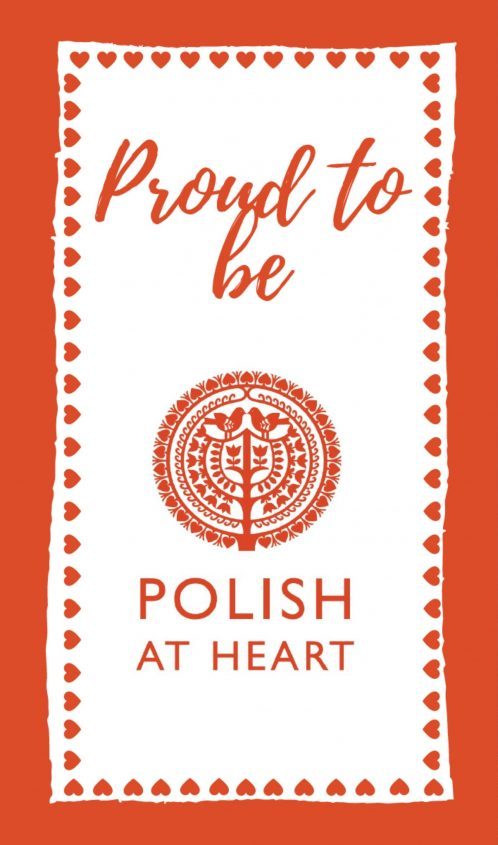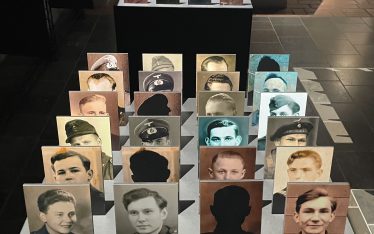“The atmosphere of one moment or one day wasn’t enough to create this song. It was the outcome of the atmosphere of many weeks leading up to the battle” F.Konarski
Feliks Konarski and Alfred Schutz, the authors of this famous song will have met many of the 50,000 soldiers of the II Polish Corps. They entertained them as part of the army touring performance division. “Czerwone Maki” (Red Poppies of Monte Cassino) is now a symbol of remembrance for the heroic deeds of the Poles who, having survived Siberia, fought with passion and determination for freedom.
The moment of creation, in Konarski’s own words, is as dramatic as the song itself. Thanks to a dear friend I can share it with you here. Konarski often wondered whilst singing jovial songs to the soldiers, seeing their laughing faces, how many he was seeing for the last time? They were “picking up their rifles the next day, heading for a duel with death”.

On that fateful night 17 May 1944
In the days from 6 – 17 May at night, as the signals division set up communication channels for the coming battle, the theatre group visited various battalions of the 5th Division (5KDP) amongst others. In Aquafondata they were shot at by the German artillery. Returning late in the evening from Lucerne, where they had performed for the 23rd Transport Company Konarski was exhausted, but couldn’t sleep. Looking through the window at the distant flashes of artillery fire he kept returning to General Anders’ last words… the time has come for battle.
Konarski writes “And in front of us is the monastery mountain, spewing fire. I see it, a black mass, piercing the sky. Reaching the top of the clouds… and under the clouds a pile of rubble… And angry rats hiding in the rubble. Rats in the clouds…. illogical and yet true.

The words just came to me
I jumped off the bed… a little awkwardly, but the words will stay, because they just came to me:
‘Czy widzisz te gruzy na szczycie? Tam wróg twój się kryje jak szczur. Musicie, musicie musicie. Za kark wziąć i strącić go z chmur. Do you see the rubble on the summit? Your enemy is hiding like a rat. You must, you must, you must. Grab his neck and knock him off the clouds……. I poszli szaleni, zażarci, I poszli zabijać i mścić I poszli jak zawsze uparci, jak zawsze – za honor się bić……so they went heedless of danger, And they went, to kill and avenge, And they went stubborn as ever, As always – for honour – to fight.’
They went… those alive, with the dead… So that the warm May night, just like the poppies on the slopes, would blush with their blood..
‘Czerwone Maki na Monte Cassino, Zamiast rosy piły polską krew. Po tych makach szedł żołnierz i ginął, Lecz silniejszy od śmierci był gniew…..Red poppies on Monte Cassino Instead of dew, drank Polish blood. As the soldiers crushed them in falling, For their anger was more potent than death.’
I was writing feverishly, quickly…..I felt like I was advancing with Them. Only today, after many years, I see that the song seemed to predict the course of events… And if it didn’t precede the battle, at least it coincided with it. A hunch? A coincidence? …The magic of a moment? I woke Schutz up first.
– Fredek, get up!
He looked at me half-consciously
– what happened? … are we leaving?
– you have to make music and do it within half an hour, At the latest!
– Man, are you crazy? … I have to write music for you at three in the morning?
Schutz blinked his black eyes and holding his pajama pants, began to wander around the room, looking for sheet music. But after a while he was sitting at the piano and studying the text carefully.
I left him and went out into the street. Campobasso was deep in sleep. I woke up all my friends. …within twenty minutes everyone showed up at Schutz’s. He already had the music mapped out….. We started trying it out. After less than half an hour we parted ways. I asked Fabian to write the refrain text in ink on a large sheet of paper because I wanted the soldiers to sing the song with us……..Schultz didn’t sleep at all that night. He smoothed out the music. He was inspired.
18 May 1944
At 9:00 we left for Cassino. As I approached the designated section along the way, I saw a lone soldier’s grave behind a roadside ditch. A hastily assembled cross, tied with white tape, it stood slightly tilted. Under the cross, a bunch of poppies in the shell casing of a bullet. Then I thought how many new crosses had appeared during that May night? I took my notebook out of my pocket and wrote the third verse in the truck.

Czy widzisz ten rząd białych krzyży? Tam Polak z honorem brał ślub. Idź naprzód im dalej im wyżej tym więcej ich znajdziesz u stóp…… Do you see the rów of white crosses? That’s where Poles with honour took vows. Go onwards, go further, go higher, the more at your feet you’ll find. …..Ta ziemia do Polski należy, choć Polska daleko jest stąd. Bo wolność krzyżami się mierzy, historia ten jeden ma błąd…..This land belongs to Poland, although Poland is far from here. Because freedom is measured by crosses, that’s history’s major mistake…
Singing ‘red poppies’ for the first time at the foot of the monastery mountain, we all cried. The soldiers cried with us. The red poppies that bloomed that night became another symbol of heroism and sacrifice – and a tribute from the living people to those “who, through the love of freedom, gave up for the freedom of people”. At noon, the Polish flag was raised on the Monastery. The English one shortly after and a trumpeter played the hejnał Mariacki – the Kraków Bugle Call. The following day the full version of the song was presented at a concert in the ruined Abbey.
Konarski and Schutz

Feliks Konarski left Kiev at the age of 14 in 1907, for a better education in Warsaw. With a musical ear, he soon worked his way up in the business. Within 10 years he was composing for the theatre group ‘Quid Pro Quo’ amongst others. When the Russians invaded Poland he toured the Soviet Union with an orchestra. Soon after the Russians joined the Allies, he made his way to the Polish Forces and joined the Army ‘Polish Parade’ theatre group. He was nicknamed “Ref-Ren” for always starting songs with the refrain.

Alfred Schutz’s first love was music and he studied the piano although his father, a banker, hoped he would enter the legal profession. He became the musical director for the famous radio programme “Wesoła Lwowska Fala” – the Lviv Merry Wave in the 1930s before moving to Warsaw. There, he composed songs for the famous stars of the day like Hanka Ordonówna and worked with the record label Syrena. Returning to Lwów in 1939, he toured the Soviet Union with the theatre. Whilst ill with typhus in 1941 he was called up by General Anders to join the propaganda division of the Polish Armed Forces.
To the corners of the world

The first edition of the music was published in 1944 in Italy by the Culture and Press Department of the 2nd Corps. It reached New York soon, published in ‘Tygodnik Polski’ on August 20th: “…. Jest to piosenka urodzona w bitwie. piosenka mówiąca porostu co czują wszyscy.” “It is a song born in the battle. the song says what everyone feels……”
Konarski continues: “Once the poppies of Monte Cassino bloomed in Italy, they bloomed everywhere, carried on the same wind to the furthest corners of the world, yet by such different roads… “ In French it was ‘Des coquelicots rouges sur le Monte Cassino’.
and in Poland?
Immediately after the end of the war “Czerwone maki” was often published in articles about Monte Cassino. The then regime did not oppose the popularity of this soldier’s song. Konarski says the idea was to encourage the soldiers staying in the West to return. Until the moment when those who wanted to – came back and the Iron Curtain fell for good. On the only copies printed in Poland in 1947, the authors’ names were missing and some words changed. Soon the song was added to a long list of banned cultural items.
Symbol for the soldiers
But in the West it flourished in recordings, in films, sung by Anders’ wife Irena Bogdańska and others. My mother who grew up in Poland separated by the Iron Curtain from her soldier father in the UK, knew the song. Everyone knew it but it was on the ‘indeks’ and they dare not sing it for fear of repercussions. Once reunited with her father in the UK my mother sang Czerwone Maki across the country at various patriotic events and performances.
Our duty to respect their faith
I have visited Monte Cassino many times including with my mother and have taken part in the official Polish government’s wreath laying ceremony representing the Polish Scouting Association. My Uncle fought at Monte Cassino, in the 2nd tank regiment. I wrote this poem after the last commemoration event and it seemed only right to link my recording of reading it, with my mother’s recording of “Czerwone Maki” in the background:
Listen to the whole of the “Czerwone Maki” song
Quotes and illustration from: Historia Czerwonych Maków by Feliks Konarski, Gryf Printers, London 1961 Feature photo: @copyright R Szydło / rsimages and images of authors from www.staremelodie.pl


 1.Tracing Family History pre-WW2
1.Tracing Family History pre-WW2 2. Tracing Family History WW2
2. Tracing Family History WW2


